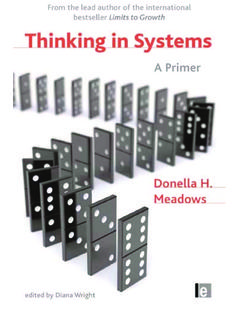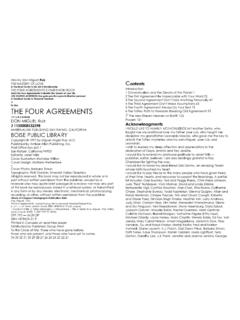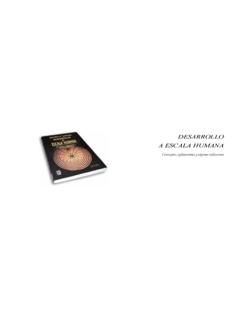Transcription of Human Scale development-Max-Neef - wtf.tw
1 Human Scale DEVELOPMENTCONCEPTION, APPLICATION ANDFURTHER REFLECTIONSM anfred A. Max-NeefWi t h c o n t r i b u t i o n s f ro mA n t o n i o E l i z a l d eMartin HopenhaynForeword by Sven HamrellDag Hammarskj ld FoundationT h e A p e x P r e s sNew York and LondonPublished in 1991 by The Apex Press, an imprint of theCouncil on International and Public Af f airs, 777 Unit ed NationsPlaza,New York, New York, USA (212/953-6920) and 57 Caledonian Road, London, N1 9BU, U. K. (01-837-4014)Part One of this book w as published under the title,D esarolloa EscalaHumana: una opci n para el futuro,by the DagHammarsky ld Foundation, Uppsala, Sw of Congress Cataloguing-in -Publication DataCONTENTSF orew ord by Sven Hamr ell, Dag Hammarskj ldFoundat ionviiPref acex iAbout theContributorsxivMax- neef , manfred Scale development : conception, application and furtherreflections/by manfred Max-Necf, with contributions from AntonioPA RT ONE: HUMA N SCALEDEV ELOPMENTE lizalde, Martin Hopenhayn ; foreword by Sven "Part One of this book was published in Spanish as a special issue ofDevelopment Dialogue in 1986 under the title, Desarrollo a escalahumana: una opci n para el futuro" P.
2 The Lat in American Situat ion: Crisisand Perplexity, manfred Max- neef ,Antonio Elizalde and Martin HopenhaynA Crisis of Proposals and a Crisis of Utopias11 ISBN0-945257-35 -XLimitat ions to Our Development41. Latin America Economic policy. 2. Economic of Human Scale Development8 Elizalde, Antonio. II. Hopenhayn, Martin. III. and Human Needs, manfred Max- neef , dc2091-12713 Antonio Elizalde and Martin Hopenhayn13 British Library Cataloguing-in -PublicationDataRef lections on a New Perspective13 Argumentation23 Max- neef , manfred ions f or a Possible Systemat ization29 Human Scale development :conception, application and furtherA Noteon That Deter mine development Styles47I. T and Self-reliance, manfred Max- neef ,ISBN 0-945257-35-XAntonio Elizalde and Martin Hopenhayn55 Tow ard a Self-reliant Development55On the Invisible World65On Micro-organizations71 Typeset and printed in the United St ates of AmericaOn Unresolved Problem of Micro -macro Articulation, manfred Max-Neef87 Seeking Solutions87 The Problem of Aggregation88 Articulation and Sense of Direction of the System91PA RT TWO: FIRST STEPS INTO FURTHER the Pruning of Language (and OtherUnusualExercises) f or the Understandingof SocialImprovement, manfred Max-Neef93 The Problem93 Manif estations of the Problem94 Searching f or Answ Stupid Way of Lif e, manfred Max-Neef105 Insight105 Crisis106On Constraints of Language108 Some Solutions?
3 110 Future Scenarios112 FOREWORDT he Dag Hammarskj ld Foundation has since the publicationofthe 1975 Dag Hammarskj ld Report,What Now: Another Develop-ment,concentrated heavily on the sectorial aspects of the alternativedevelopment strategies advocated in this seminal document. A longseries of seminars has been organized under the Foundation's auspiceor in cooperation with like-minded organizations to test the applicabilityofthe ideas of Another development need-oriented, self-reliant, en-dogenous,ecologicallysoundandbasedons tructuraltransformations in areas such as rural development , health,education, scienceand technology (especially plant genetic resourcesand biotechnology),international monetary policy, information andcommunication, and interesting and unusual example of this is the Latin Americanproject on Human Scale development , the objective of which waslaya foundation for future action programs by analyzing the conceptsofhuman needs, Scale and efficiency and by focusing on unemploy-ment and local development financing, that is, concepts and problemsthat had not been penetrated in depth inWhat his project wasundertaken in 1985 and 1986.
4 It was organized by the DevelopmentAlternatives Centre (CEPAUR) in Chile and the Dag Hammarskj ldFoundation, Sweden, and was directed by manfred since the results of the project were published in a Spanishedition ofDevelopment Dialoguein 1986, under the title ofDesarrolloa Escala Hu mana: una opci n para el futuro,it ha s att ractedwideattention in Latin it is probably not anexaggeration tosay that it is perhaps one of the most photocopieddocuments of its kind,having found its way to the most unexpectedand remote places. According to records kept at CEPAUR, close tofifty seminars, symposia and workshops have been held on the basisof the report in different parts of the continent, many of themspontaneously organized by interested bodies without assi stancefrom CEPAUR. T hus," Human Scale development " has become animportant topic of the development discussion in South and there are also more concrete examples of the impact of thereportonpolicymakers atthe national and local in Colombia, Venezuela and Argentina havetaken a keen interest in the ideas advanced.
5 In Argentina, forinstance, the National Mental Health Program is being adapted toaccord with the ideas set out in the report, and in the Argentineprovince of Mendoza, communities, schools and hospitals areapplying the principies and methodology of Human ScaleDevelopment in their significant, however, is the extent to which social movementsand grassroots organizations have been inspired by the report,andthisdespite its, in pan, highly theoretical characterit has, in fact,beenpopularized by grassroot s organization s th rough po ste rsand eventhrough comic book style publications aimed at non-academic readers. Further evidence of this interest are thehundredsof letters received by CEPAUR and the Dag Hammarskj ldFoundation, requesting not onlyadditional copies of the repon andcopies of the project papers, but alsoassistance in the organizationof seminars and workshops as well as practical and financialassistance in the implementation of Human Scale can speculate about the reasons for this unexpectedly positiveresponse, but one of them is probably that Human ScaleDevelopment,with its strong emphasis on the role of Human creativityin development ,has provided a conceptual framework which seemsto show a way outof the sterile confrontation between traditionaldevelopmentalism and neo-liberal monetarism.
6 Based on theprinciple that "the purpose of the economy is to servethe people,and not the people to serve the economy" and on a sophisticated butunavoidably controversial in-depthanalysis of 11 te natureofhumanneeds, it is a challenging new contribution lo development his book i s both an English tran slation of the originalSpanishwork and an extension of that work finto what the author calls "FurtherReflections." It should merit the attention of the international develop-ment community as should the action programs now being workedout by different grassroots organizations and by CEPAUR. Many ofthem, including CEPAUR, also deserve being financially assisted. Itis, therefore, sad to note that so far almost no such support has beenforthcoming; development agencies still seem to prefer to lose theirfunds in conventionalfailures rather than having to justify their use inunconventional successe Hammarskj ld FoundationSven HamrellDag Hammarskj ld CentreExecutive Director vre Slottsgatan 2S-752 20 Uppsala, SwedenPREFACEThe essays contained in Part One of this book crystallize the work,essentially transdisciplinary in nature, carried out in various countriesinLatin America by a team of researchers.
7 It was prepared over a periodofeighteen months with the collaboration of professionals from Chile,Uruguay, Bolivia, Colombia, Mexico, Brazil, Canada and heir expertise covered such academic disciplines as economics,sociology, psychiatry, philosophy, political science, geography,anthropology, journalism, engineering and law. The participants con-stituted a stable core group that guaranteed continuity in the processesof collective investigation and reflection inherent in the project. Fromthe beginning, close working relations were established, thus nurturingan intense intellectual exchange. T he participants gathered togetherthree workshops during the project, which was conducive to a profoundreflection on various aspects of the development problematique. In ad-dition, special guests were invited to each of the threeworkshops andenriched the quality of the proceedings of each of the workshops and the working papersproduced by the participants form the basis of this book.
8 The final com-piling and editing was the responsibility of the CEPAUR staff, whosechallenge was to integrate in a coherent manner the diverse inputs ratherthan just reflect the particular opinion of each of the participants. Thedocument produced on the basis of the three workshops was then dis-cussed at a final evaluation seminar at the Dag Hammarskj ld CentrexiiHuman Scale DevelopmentPr e facexiiiin Uppsala. *The conception presented in this book is a contribution to develop-ment philosophy. As such, it offers suggestions, while remaining opento further his project was the result of the joint efforts of the DevelopmentAlternatives Centre (CEPAUR) in Chile and the Dag Hammarskj ldFoundation in Sweden. It grew out of the need to place the DagHammarskj ld Report of 1975, entitledWhat Now: AnotherDevelopment,in the Latin American context, giving specialconsideration to themyriad changes that have occurred in the lastdecade.
9 The text that follows aspires to have as interlocutors personsinvolved in regional andlocal development , planning, politics,academic disciplines concernedwith development and, mostimportantly, those dedicated to thehumanization of a world in , the ideas presented here are an attempt to integrate fines ofresearch, reflection and action that substantially contribute to theconstruction of a new paradigm of development ,less mechanistic andmore One of this book was published in Spanish as a special issueofDevelopment Dialoguein 1986 under the titleDesarollo a EscalaHumana: una opci n para el version was then translatedinto English by Joey Edwardh and manfred Max- neef and appeared in1988 as another special issue ofDevelopment new section, "A Note on Methodology," has been added to thisbook version, as have the final two chapters which constitute Part T woof the he first of these new chapters is an expanded version of an essayon "The Pruning of Language," which was published in 1988 inmodified form inDevelopment,the journal of the Society for Interna-tional development .
10 T he second chapter is an edited version of the* The project team wishes to express its gratitude to the functionaries andacademics of the Univ ersity of La Serena in Chile, the Federal Univ ersityofPernambuco, Brazil, andthe Foundation f or Dev elopment of the XIIR egion, Chile, for their enthusiastic support f or an efficient execution ofthevarious regional seminars held throughout the duration of this the intellectual and material support of these institutions, thesuccessful completion of this project would not have been Memorial Lecture delivered by the author in October1989in Bristol, of these additions to the present book represent, if not finishedproducts, at least paths into new and open fields of research andreflection. They underscore the elusive and never-ending search forfinal answers in the quest for Human betterment through he development Alternatives Centre, CEPAUR, is a non-governmental organization of international scope, dedicated, throughresearch of a transdisciplinary nature and action projects, to thereorientation of development by stimulating forms of local self-reliance,satisfying fundamental Human needs and, in a more general sense, topromoting Human Scale Max-NeefExecutive Director, CEPAURABOUT THE CONTRIBUTORSM anfred Max- neef ,Chilean economist, is the founder and ExecutiveDirector of the development Alternatives Centre CEPAUR inChile.




